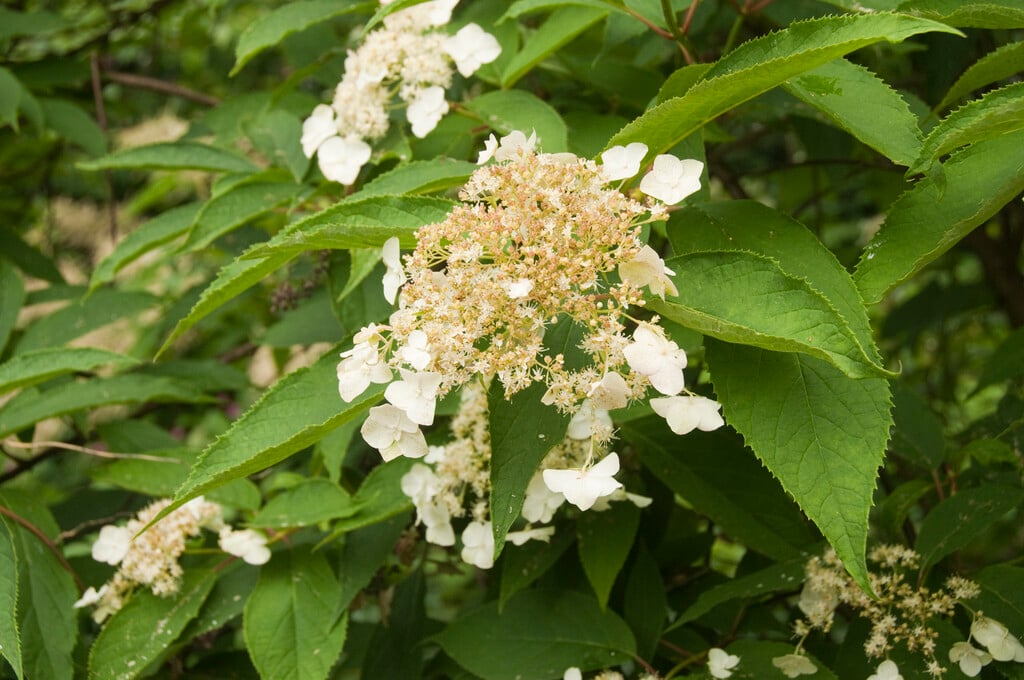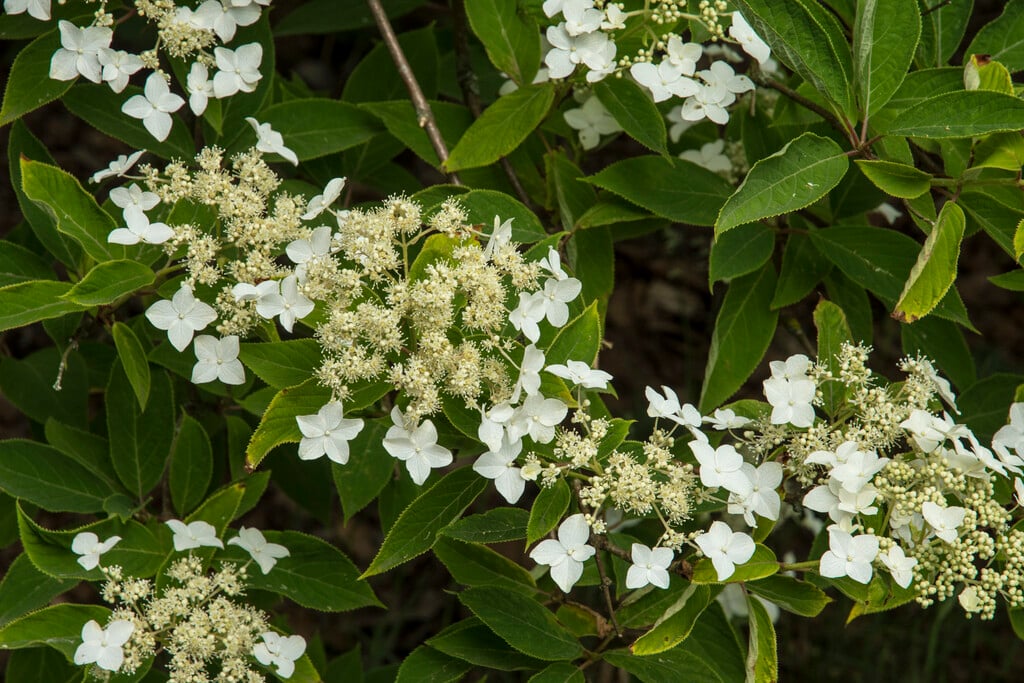Hydrangea heteromalla
woolly-leaved hydrangea
A variable species, from mid sized shrubs to small trees, and up to around 5m high in cultivation. Leaves are dark green with greyish-white hairy undersides, usually toothed and often held on reddish stems. Produces broad flat flower heads from late spring to early summer, with loose clusters of small true flowers surrounded by larger florets, usually white but sometimes turning pink as they mature
Size
Ultimate height
4–8 metresTime to ultimate height
5–10 yearsUltimate spread
4–8 metresGrowing conditions
Moisture
Moist but well–drainedpH
Acid, Alkaline, NeutralColour & scent
| Stem | Flower | Foliage | Fruit | |
| Spring | White Pink | Green | ||
|---|---|---|---|---|
| Summer | White Pink | Green | ||
| Autumn | Green | |||
| Winter |
Position
- Full sun
- Partial shade
Aspect
North–facing or South–facing or West–facing
Exposure
Sheltered Hardiness
H4Botanical details
- Family
- Hydrangeaceae
- Native to GB / Ireland
- No
- Foliage
- Deciduous
- Habit
- Bushy
- Potentially harmful
- Skin allergen. Wear gloves and other protective equipment when handling. Pets (dogs, cats): Harmful if eaten. For further information and contact numbers regarding pets, see the HTA guide to potentially harmful plants
- Genus
Hydrangea can be deciduous or evergreen shrubs, or self-clinging climbers, with flowers in clusters usually comprising both small fertile and more showy sterile flowers; often good autumn colour
- Name status
Correct
- Plant range
- Himalayas to China and Vietnam
How to grow
Cultivation
Grow in any moist but well-drained soil in partial shade or grow in sun if soil remains reliably moist. Improve chalky soils with organic matter to support good growth. See shrubby hydrangea cultivation for further advice
Propagation
Propagate by softwood cuttings in early summer, or by hardwood cuttings in winter
Suggested planting locations and garden types
- Cottage and informal garden
- Flower borders and beds
- Wall side borders
Pruning
See pruning group 4 (hydrangeas)
Pests
May be susceptible to aphids, capsid bug, red spider mite, stem and bulb eelworm, vine weevil and scale insects
Diseases
May be susceptible to a leaf spot, powdery mildews, grey moulds (Botrytis) and honey fungus (rarely)
Get involved
The Royal Horticultural Society is the UK’s leading gardening charity. We aim to enrich everyone’s life through plants, and make the UK a greener and more beautiful place.

